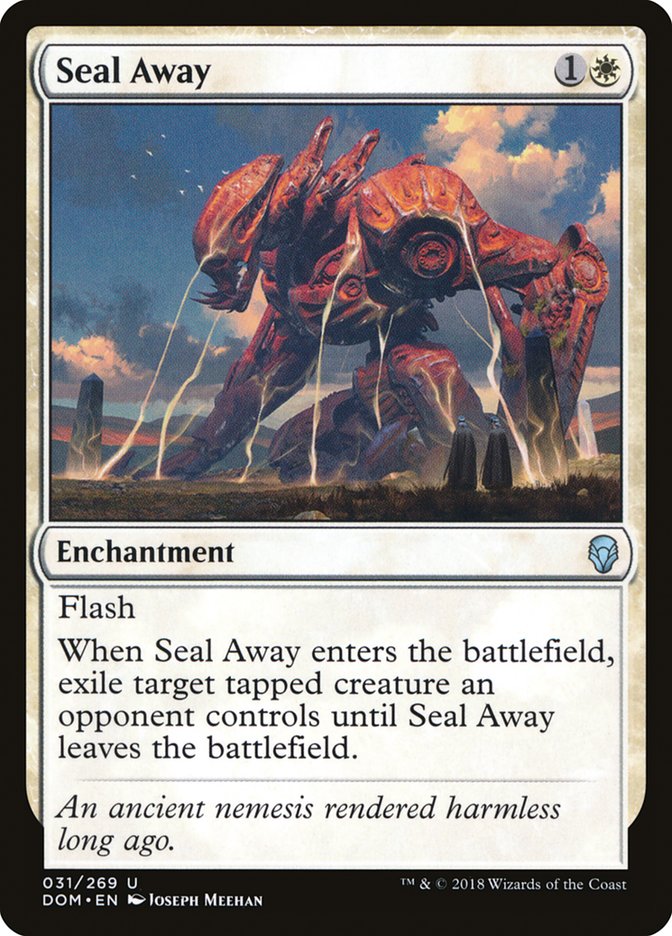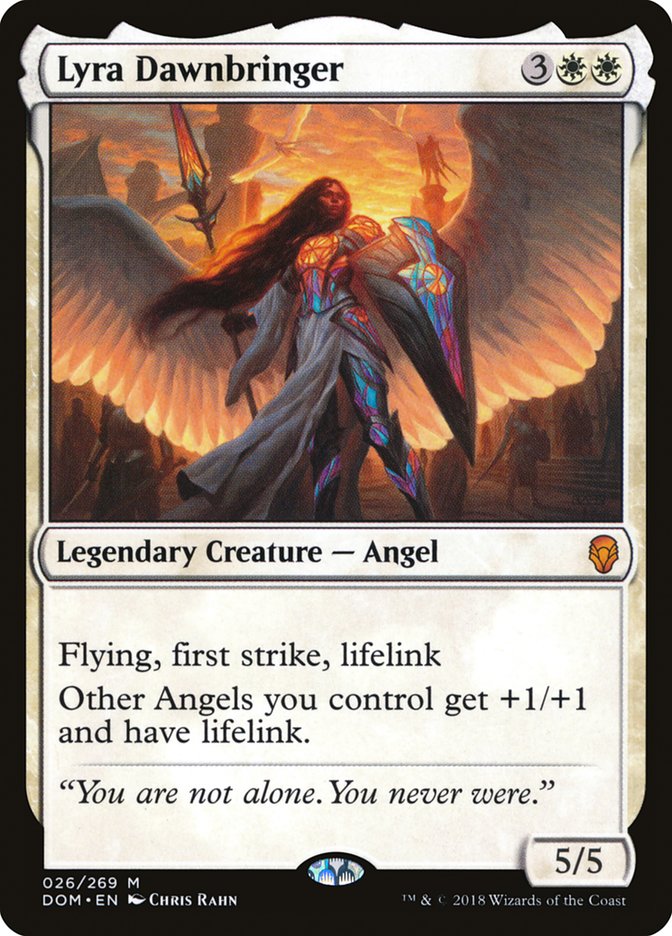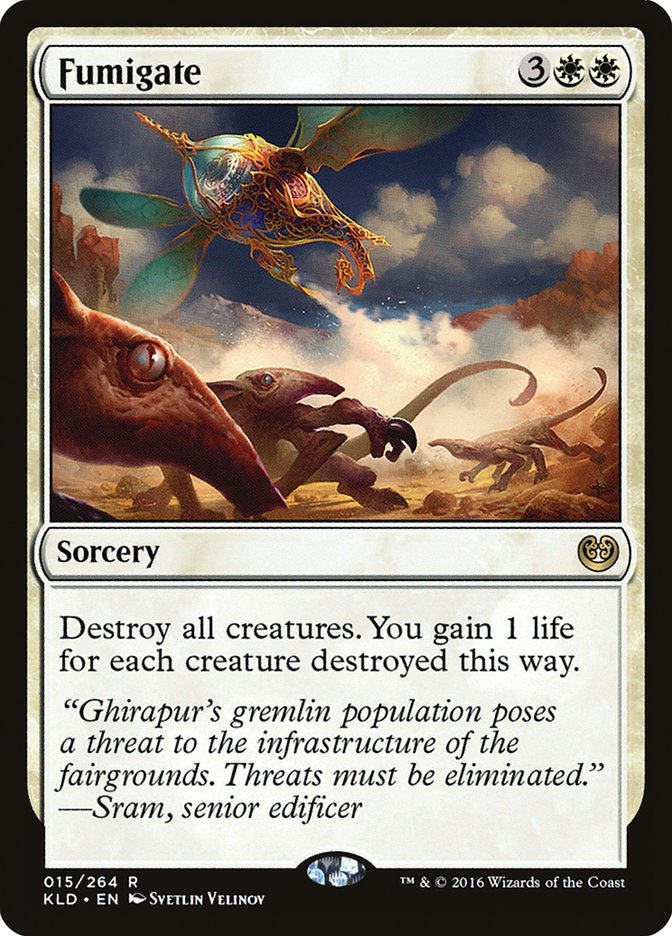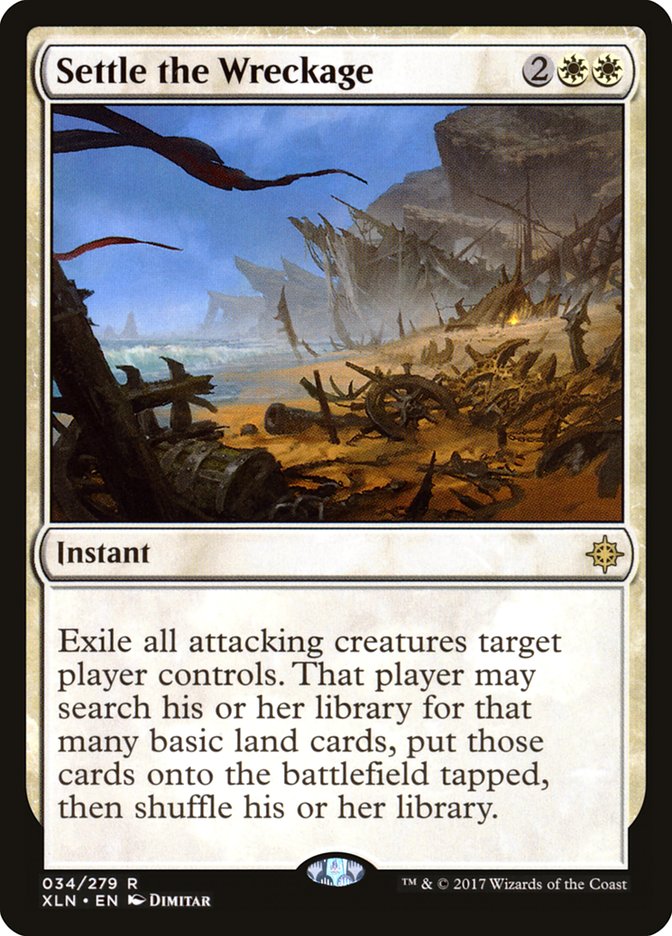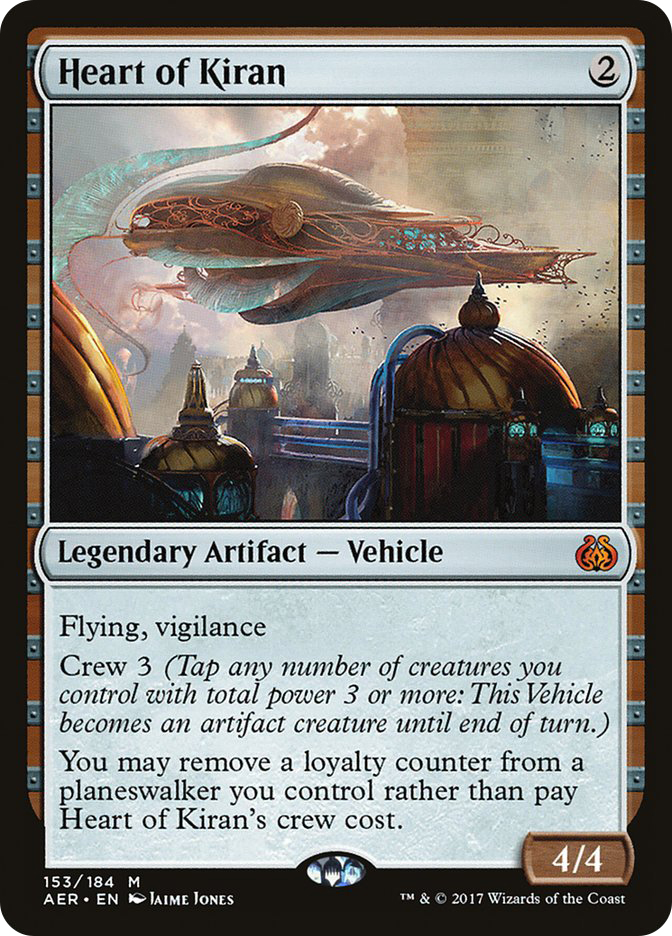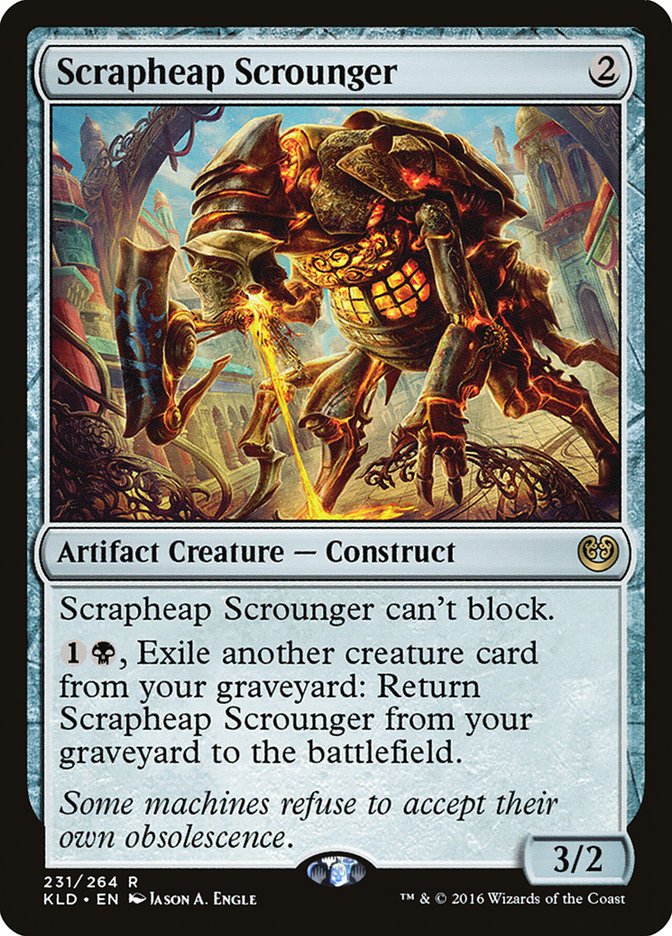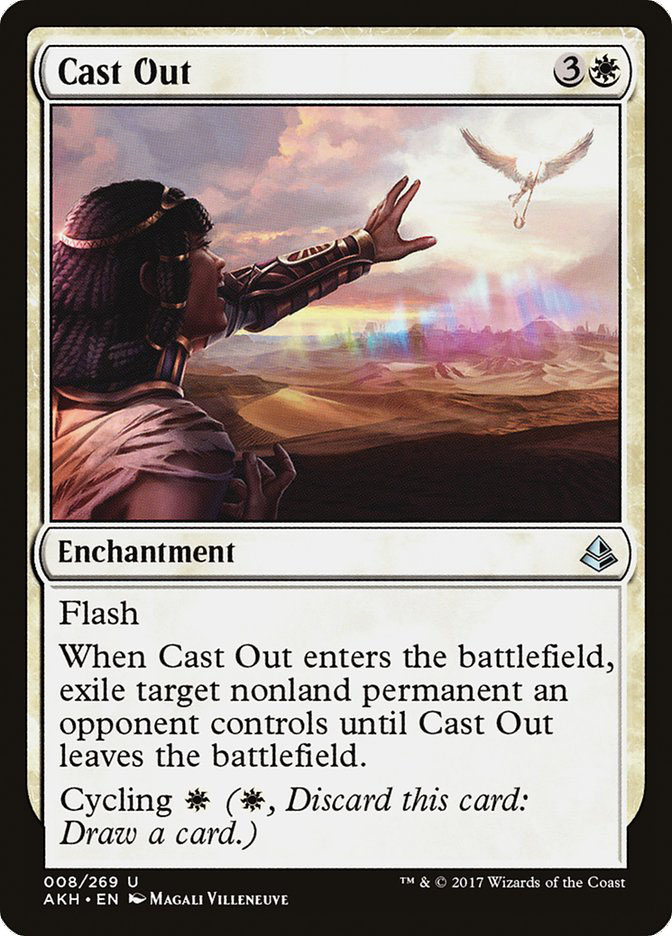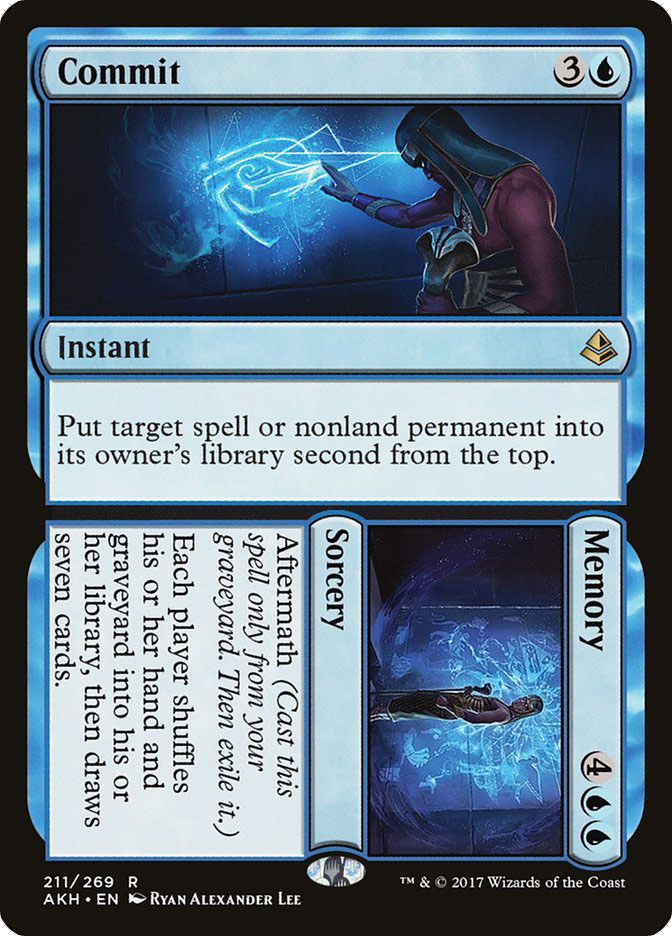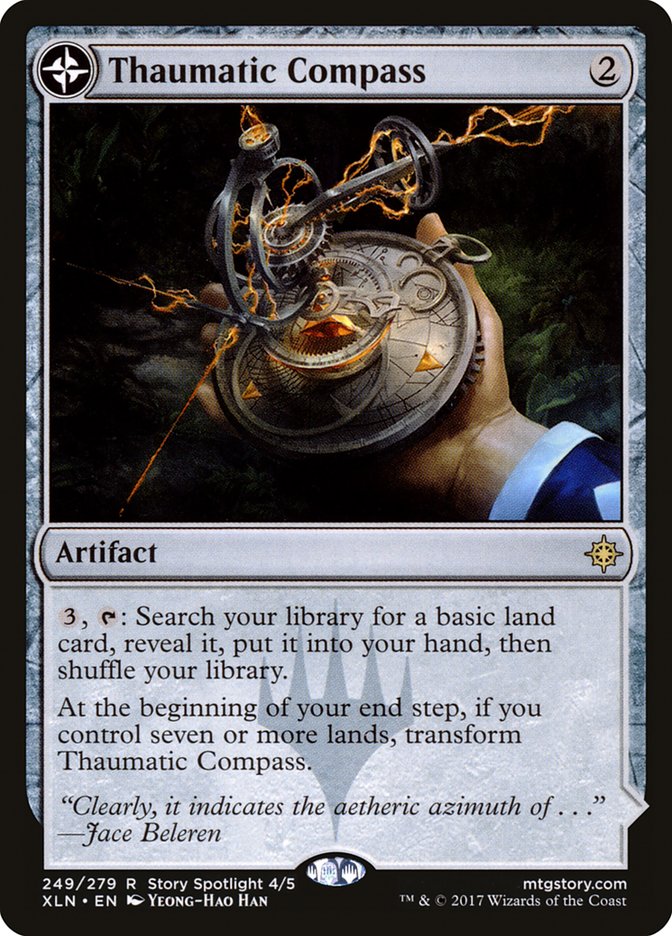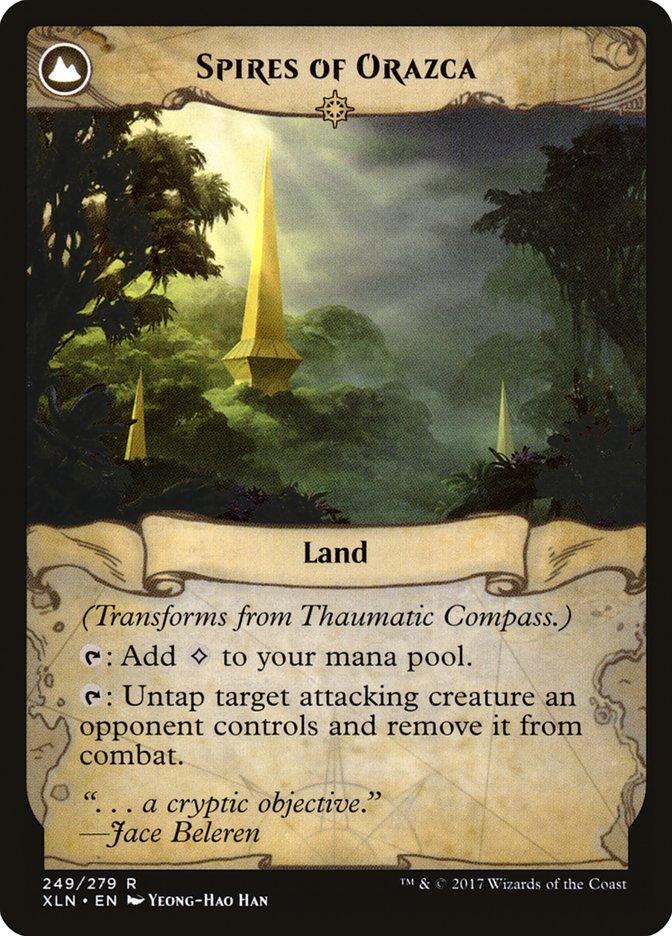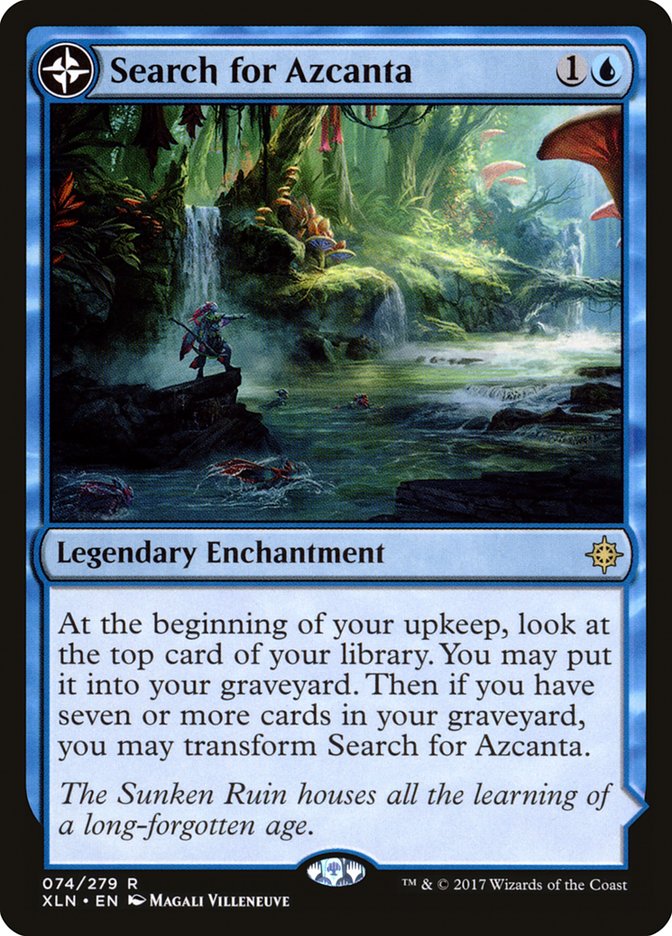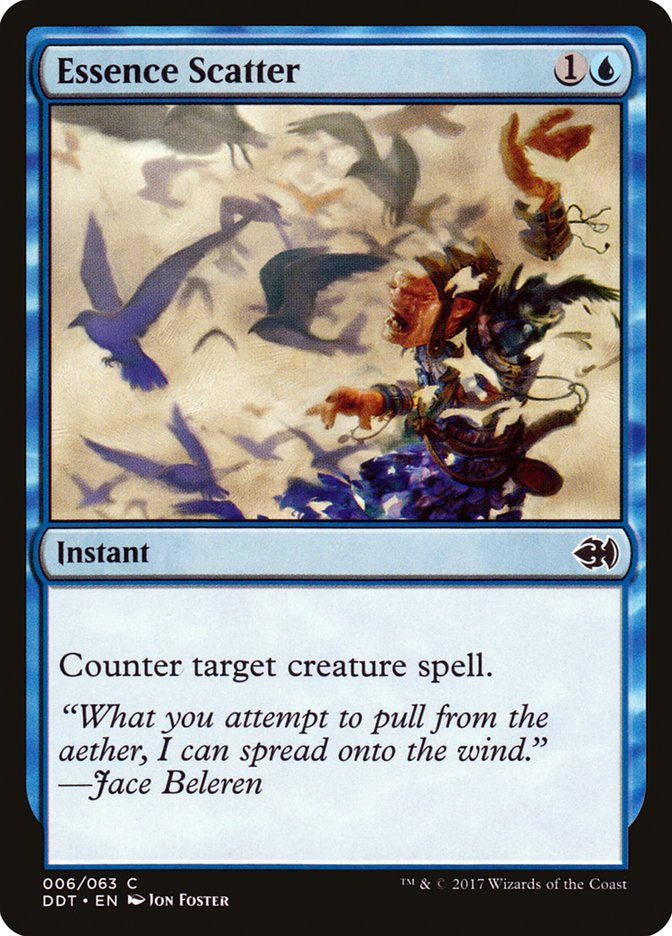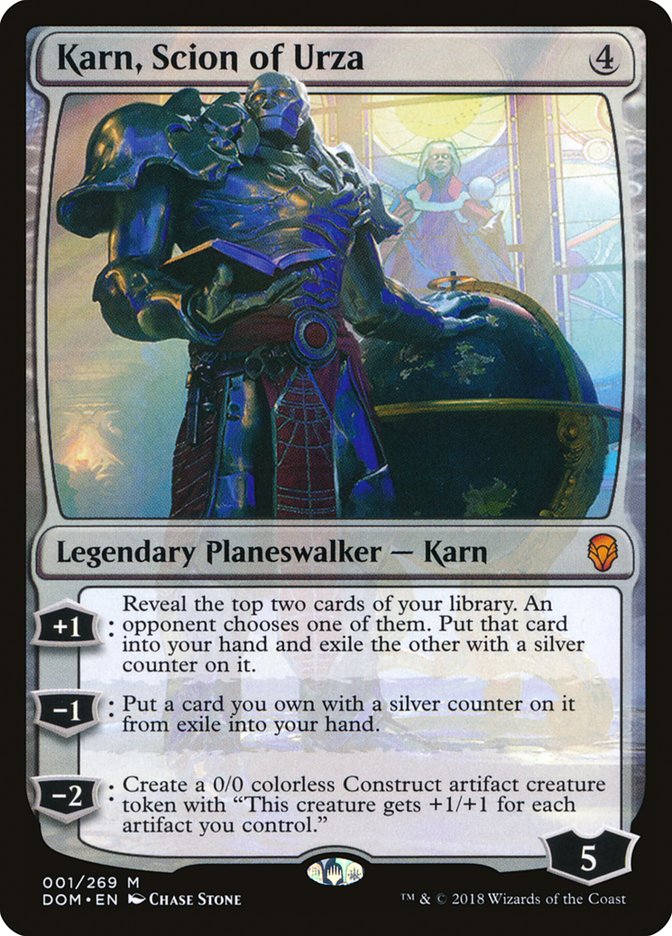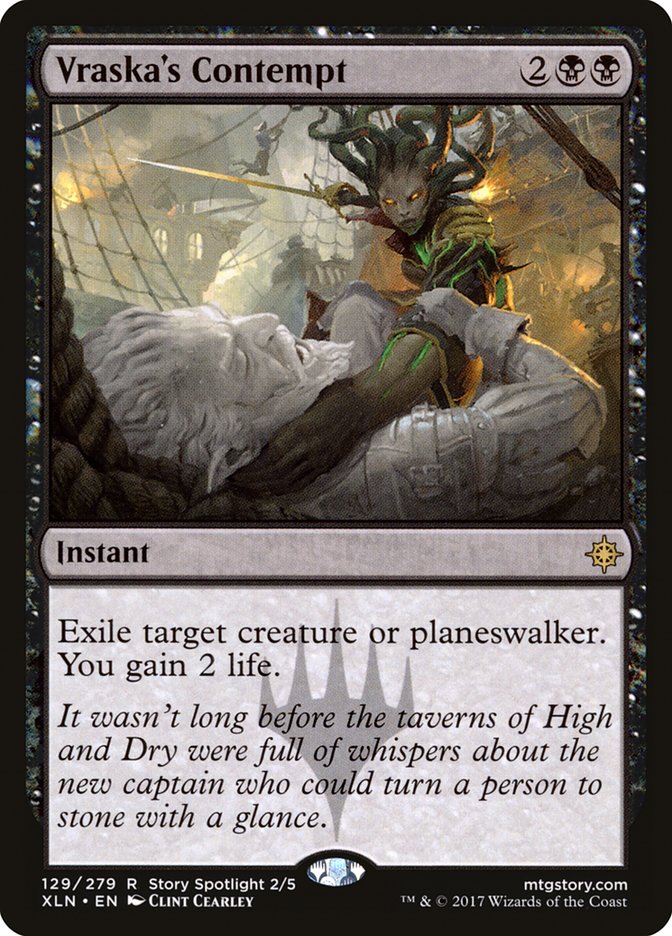For a long time in Standard before the release of Dominaria, if
you wanted to play a control deck, U/B was where it was at.
Sure, U/W Control existed before Dominaria, but it wasn’t
a huge player. It had several glaring weaknesses and the general consensus
was that the deck was just a worse U/B Control. Now that we’re two weeks
into Dominaria Standard, it’s safe to say that things have
changed.
Dominaria
gave us a host of new white cards, and Standard will never be the same. For
my money, Seal Away is the one that’s the most directly responsible for
making U/W Control good right now, but Teferi, Hero of Dominaria certainly
deserves some credit too. But why U/W Control is good now when it wasn’t
for so long isn’t what I’m here to talk about today.
No, the thrust of my thoughts lately has been on how to beat U/W Control.
Or more specifically, on why the things I did to beat U/B Control weren’t
working against U/W. Despite both having control in their moniker, U/W and
U/B are very different animals and should be approached from very different
angles. To beat your enemy, first you must know your enemy. Here’s a look
at the new face of control.
Creatures (4)
Planeswalkers (3)
Lands (26)
Spells (27)

They’re A Sweeper Deck
Let’s start with the basics.
The fundamental difference between the two flavors of control that Standard
has seen in recent days is that U/W Control gets to play with Fumigate and
Settle the Wreckage. U/B Control, for all its format-warping power, relied
entirely on Fatal Push, Vraska’s Contempt, and countermagic to keep the
draw steps coming. Most of the difficulty in beating U/B Control lied in
getting them to stumble. If you managed to get them on the backfoot, it was
generally easy enough to keep them playing from behind until you won the
game. Aside from The Scarab God, they ran no cards that could reliably
catch them up.
The same cannot be said about U/W Control. Fumigate and Settle the Wreckage
are the exact kinds of cards that a control deck wants to lean on to get
back in games that got away from them a bit in the early turns. Sweeper
effects are so good that the stock U/B Control started to sideboard a copy
or two of Bontu’s Last Reckoning despite said Reckoning being a much worse
Magic card than Fumigate. Beating a control deck that has a gameplan of
periodically sweeping away your entire battlefield requires a very
different approach than beating one that’s relying entirely on spot removal
and countermagic.
Level zero:
The most important thing you can do to beat sweepers is to not overextend
into one. When you know your opponent has access to Settle the Wreckage,
you probably shouldn’t send four creatures recklessly into four open mana.
If your opponent is able to get three or more of your cards for one of
theirs, things aren’t going to end well for you.
Level one:
You must extend into their sweepers. It’s a fine line, but you must walk it. If you decide that you never want to risk losing two
threats to a single card from your U/W Control opponent, you’ll find your
single threat being taken out a spot removal spell in your end step time
after time and you’ll end up losing the game without ever forcing them to
pull the trigger on a sweeper.
Level two:
The most important thing you can do to beat sweepers is to overextend into
the one they don’t have. Unless U/W Control is having a particularly bad
draw, at some point you’re going to have to force your opponent to have a
sweeper. You can’t afford to give your opponent infinite time to sit around
and pull ahead naturally off simply casting more five-mana and six-mana
spells than you. In most games, I find myself giving my U/W Control
opponent credit for the first two sweepers every time, credit for the third
half the time when my position is above average, and credit for the fourth
almost never.
Enough of the Magic 101 stuff about how to beat control decks with access
to sweepers. The first big ramification of the Standard control deck de
jour playing a huge density of sweepers is that some of their spells are
now far more important than the rest. This opens a window for sideboard
cards like Duress and Negate to be very good.
We’re used to Duress and Negate style effects being the go-to sideboard
options against control decks, but the truth is that they were only ever
medium against U/B Control. U/B’s non-creature spells were just all kind of
the same. There’s a difference between Vraska’s Contempt and Fatal Push,
but not a huge one from the perspective of a creature deck against a
control deck. Often the best bet was to try and fight the Glimmer of
Geniuses and deny them card draw, but that’s not really where these cards
want to be against control.
They have a much more prestigious job against U/W: fighting the sweeper
effects. If you Duress your opponent early and take their only sweeper
effect, you can develop an overwhelming battlefield from the get-go and win
the game on the spot unless the top of their deck is unkind to you. If you
leave up Negate whenever you attack into four open mana or pass the turn
after turn 5, not even the top of their deck can stop you.
And if you thought the tempo Negate could gain you against U/B was
impressive, just wait until you get to Negate a Fumigate. Countering their
five-mana sweeper they were relying on to deal with your battlefield is a
very a hard play for your opponent to come back from. Both Negate and
Duress are very good against U/W and you should value them higher in both
play and deck construction than you did against U/B.
Another great way to fight sweepers is with threats with built-in sweeper
protection. The Vehicles subtype and Scrapheap Scrounger are the big cards
I’m thinking about here. Conveniently, these cards play very well together
and together explain W/B Aggro’s breakout performance last weekend at #SCGBALT after U/W
Control stole the show at #SCGATL.
I don’t need to explain to you how Scrapheap Scrounger and Heart of Kiran
are good against Fumigate. Scrounger comes back and Heart doesn’t even
notice a Fumigate was ever cast. What does need exploring is how they play
against this card:
So, rule of thumb: send your creatures that care about Fumigate into a
Settle before you send the ones that are Fumigate-proof. After that, send
the creatures that do nothing but attack before you send the ones that
accrue you value over time just by existing. The fact that they can only
Settle creatures you attack with is a very real limitation of the card, and
one you should punish them for at every opportunity.
Settle the Wreckage is the most enjoyable sweeper I’ve ever played against,
and the reason is that it’s exploitable in so many ways. Aside from only
letting them Settle creatures that you want to let them Settle, it’s often
very easy to take the double Rampant Growth a Settle for two give you on
turn 4 and turn it in to an insurmountable battlefield advantage. Value
mana sinks highly and only attack with creatures like Walking Ballista if
times are dire. I have won many games against U/W by refusing to turn my
Walking Ballista sideways and simply putting mana into it turn after turn
until my opponent was forced to act.
Some Notes on the U/W Spot Removal
I said before that Seal Away is the card from Dominaria that truly
made U/W Control possible, and I stand by that. Access to quality spot
removal is the thing that forces sizable extensions into sweepers. If you
don’t have quality spot removal, your sweeper deck will lose to opponents
who refuse to commit more than one threat at a time. You still must kill
that single threat, but with only sweepers available to you, you will have
to pay way over rate to do so and your opponent will still have plenty of
gas left behind to win the game with.
Pictured above are the three big spot removal spells that U/W plays. Not
pictured but still worth mentioning are Teferi, Hero of Dominaria, which
can function as a five-mana removal spell, and Blink of an Eye, which isn’t
played in every list but can function as a critical two-mana removal spell
on an important turn or a plain four-mana removal spell on a normal turn.
The big take away from the removal is that it all either costs four or more
mana or is heavily situational. We can work with that.
Four-mana removal spells are expensive. In most Standard decks,
most of your creatures will cost less than four mana. Every time you trade
a two-drop for their Cast Out you come out ahead a little bit of mana on
your opponent. Sometimes you can make use of this, often when your deck is
touching blue and can use that extra mana to hold up countermagic while
still deploying threats. If you aren’t playing blue it can be much harder
to push that mana advantage as deploying additional threats puts you at
risk to just get Fumigated out of the game, but you can often still find
isolated spots in which your threats being cheaper than their answers lets
you pull ahead.
The other big thing that U/W’s reliance on four-mana removal spells lets
you do is always have an excellent understanding of what they can do within
a single turn cycle. Because their removal is expensive they’ll be
extremely limited in how much they can do to affect the battlefield without
casting one of their sweepers. This lets you gauge exactly how much
pressure you need to apply to force them to use said sweeper.
Enough about the four mana spells then, and on to talking about Seal Away.
Whenever I see a restriction like this on a quality removal spell, all I
want to do is punish opponents who play it. If the phrase “an opponent
controls” wasn’t written in the rules text of Spires of Orazca, there would
be a lot of Thaumatic Compasses in the future of my deck registration
sheets.
Alas, that phrase is written on that card. So, what ways are there
to punish Seal Away that work? The first spot to look is creatures with
vigilance, but there’s not a lot of good options aside from Heart of Kiran.
But wow, there sure are a lot of reasons Heart of Kiran is good against
this U/W deck.
The big thing you can do is not attack with creatures that you don’t want
to get Sealed Away. Between Settle the Wreckage and Seal Away, the question
of whether to attack when your opponent has a battlefield devoid of
creatures has never been so difficult. My advice? Err on the side of
attacking.
Honestly, it hurts me to say that. I want to use the rules text on my
opponents’ cards for my own profit as much as the next girl, trust me. But
not attacking your control opponent is just playing way too far into their
hands. Similar to how to play against Settle the Wreckage, you should
absolutely avoid exposing your most valuable threat to a Seal Away on a
turn you don’t need to, but you can’t hold back entirely.
The great thing that Seal Away’s restriction lets you do isn’t stop their
removal from working, it’s control the timing of their removal. You must
attack, but you don’t necessarily have to attack right away. I will often
decline to attack on turn 2 or 3, when I know they have nothing better in
their entire deck to do than cast Seal Away. If you can get them to spend
their turn 4 casting Seal Away rather than Glimmer of Genius, you’ve won an
important battle. If that extra time let you find a Blossoming Defense for
that Seal Away, so much the better.
They Sure Don’t Build ‘Em Like They Used To
Fun fact about U/W Control: the Torrential Gearhulks they play are much
worse than the ones that U/B played.
Like we’ve been talking about, U/W Control is a sweeper deck. Sure, Settle
the Wreckage will never kill the U/W player’s own Gearhulks. But Settle the
Wreckage is only back-breaking because of the combination with Fumigate;
running Settle alone would allow players to push mana advantages against
U/W and over develop their battlefield with no intention of ever attacking
with more than two creatures. Having Fumigate in the deck keeps players
honest and keeps your countermagic relevant by not letting the opposition
simply empty their hand at the first opportunity. But having Fumigate in
the deck means sometimes you will have to cast Fumigate, and sometimes when
you cast Fumigate you will destroy your own Gearhulk. That never happened
to U/B.
The other big reason U/W Gearhulk’s are weaker than what we’re used to is
that the removal suite has moved from being instant-based to being
enchantment-based. You sure can’t use Torrential Gearhulk to Flashback Seal
Away like you can Fatal Push or Vraska’s Contempt. The main things that
Gearhulk can hit out of U/W are countermagic, card draw, and Settle the
Wreckage. It may not seem like it, but that’s a limited repertoire.
It’s very hard for U/W players to play defensive Gearhulks on their own
terms. If what they want to do is cast a Glimmer of Genius for the second
time then sure, they get to do that whenever they want. But if taking a
turn off to draw cards is unrealistic, you as the U/W opponent have a lot
of say in when your opponent gets to Gearhulk.
Brief aside: Search for Azcanta is weaker in U/W than it was in U/B for the
same reason that Gearhulk is weaker. Casting enchantments rather than
instants means that U/W doesn’t fill its graveyard nearly as fast as U/B
did, and that means Search for Azcanta takes altogether too long to
transform.
Back to Torrential Gearhulk. There’s two specific limitations of the U/W
Gearhulks that I want to point out. The first, and what I was getting at
before, is that Gearhulk out of U/W is a much less proactive card than it
was out of U/B. Before the release of Dominaria, I was a huge
proponent of sideboarding Essence Scatter against U/B Control.
I don’t think Essence Scatter is a good card against U/W Control, and
that’s only partially because they don’t have any copies of The Scarab God
for you to counter. Against U/B, Essence Scatter was basically what Negate
is against U/W: the two-mana counterspell that hits their biggest spell,
their catch-up card, and protects your lead. Gearhulk is no longer the
catch-up spell and Essence Scatter is no longer good.
The second limitation is that Torrential Gearhulk can’t Flashback Cast Out.
That’s obvious, and we’ve already covered that, but Torrential Gearhulk could Flashback Vraska’s Contempt, and that difference creates a
big weakness.
The U/W deck leans very heavily on a few select cards to answer
planewalkers and Cast Out is easily the best one. U/B had a planeswalker
weakness too and leaned on Vraska’s Contempt to handle that problem.
Because Gearhulk could Flashback Contempt, you very rarely didn’t have
access to that effect when you needed it. Without that flexibility, the U/W
deck can very easily find itself way behind when staring down a
planeswalker or two. After all, planeswalkers sure can’t be Fumigated.
Don’t Get Swerved
There’s one more card from Dominaria that’s found its way into the
U/W Control deck that we should really talk about:
This card is a pain. In true control fashion, U/W is not playing
Lyra Dawnbringer in their main deck, nor are they likely to start doing so.
No, Lyra’s home in this deck is in the sideboard, waiting for her chance to
prey on poor midrange players who sideboard out too much of their removal
thinking that they were playing against an essentially creature-less
control deck.
Alright, whatever, now that we know about Lyra, she’s not a problem, right?
Wrong. How are you going to handle her? Leave in all your removal? You’re
still playing against a control deck and need to apply early and consistent
pressure, drawing too many removal spells will likely be the end of you.
What if they didn’t even sideboard Lyra in against you?
Your best removal option is to play around three to four copies of cards
that can kill Torrential Gearhulk, Lyra Dawnbringer, and Teferi, Hero of
Dominaria. These cards are all huge problems for you if they get to stick
around on the battlefield. If the removal you leave in can handle any of
them, it’s very unlikely to be dead for the entire game. You still don’t
want too many, but a few is fine.
Hopefully your midrange deck wasn’t just dead to Lyra if she showed up game
1. It probably wasn’t, a 5/5 flying lifelink first strike creature is good
and all, but on her own can’t really stand up to the cohesive gameplans of
most Standard creature decks. Sorry, Mono-Red.
The problem is that when playing against control, the first cuts in
sideboarding are often the cards that let you go over the top of Lyra. The
first thing I do when playing G/B Constrictor variants against control is
cut my Verdurous Gearhulks, but that’s the card that lets me go over the
top of any Lyras I come across.
If you think your opponent will be sideboarding into Lyra, quell that urge.
You can still sideboard down on that over the top stuff, but don’t get rid
of it entirely. These cards might not be great against control, but they
will play a whole lot better than dead removal spells will if your opponent
didn’t bring Lyra in at all.
Your last angle of attack is to extend hard into a Lyra and force your
opponent to Fumigate. You need to enact this plan immediately without
hesitation, as often a couple of turns with an unchecked Lyra means your
opponent can no longer be forced to do anything. But like the Gearhulk
problem, one of the big problems with playing five-mana creatures in your
Fumigate deck is sometimes you’ll be forced to Fumigate them away.



